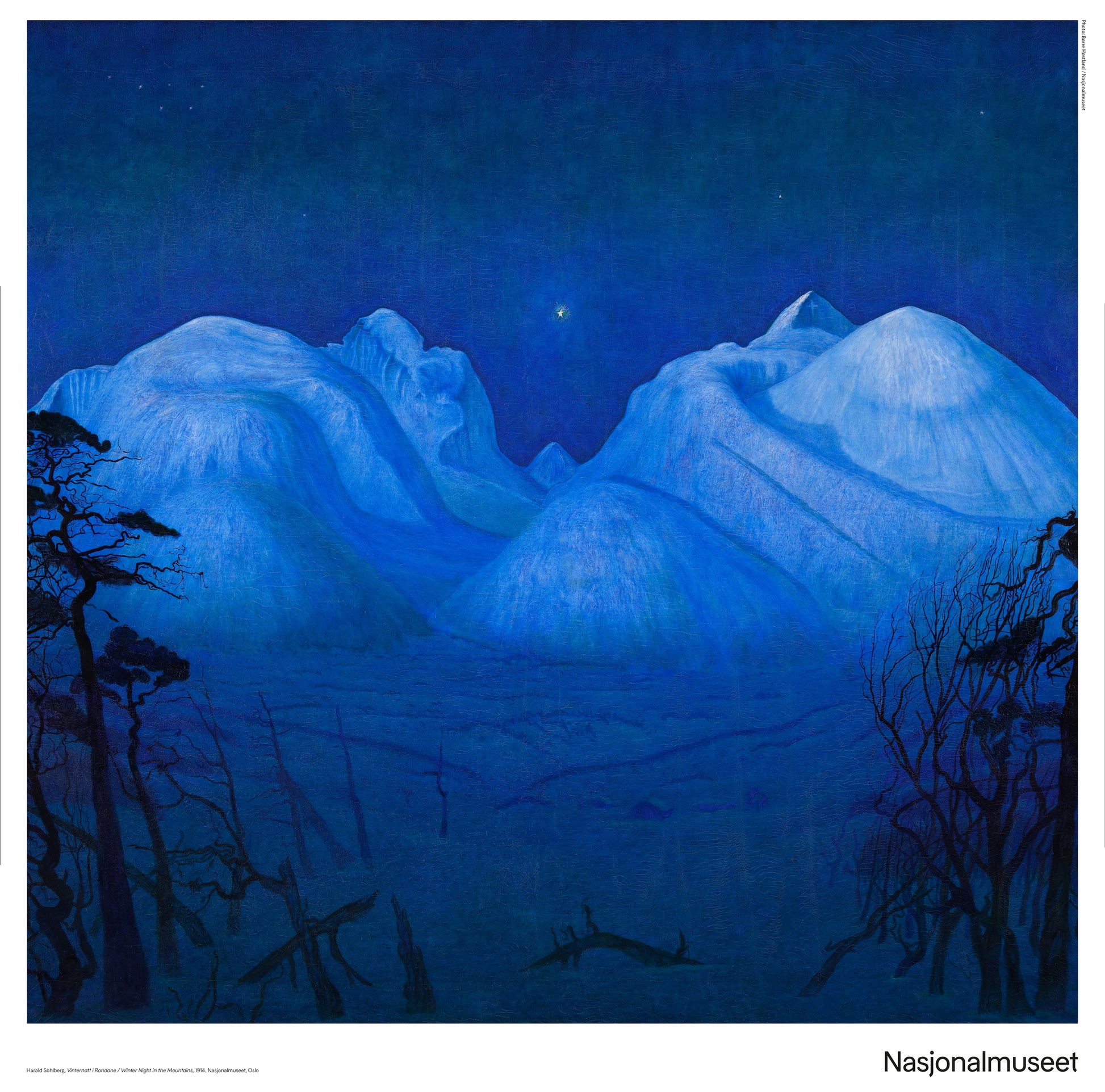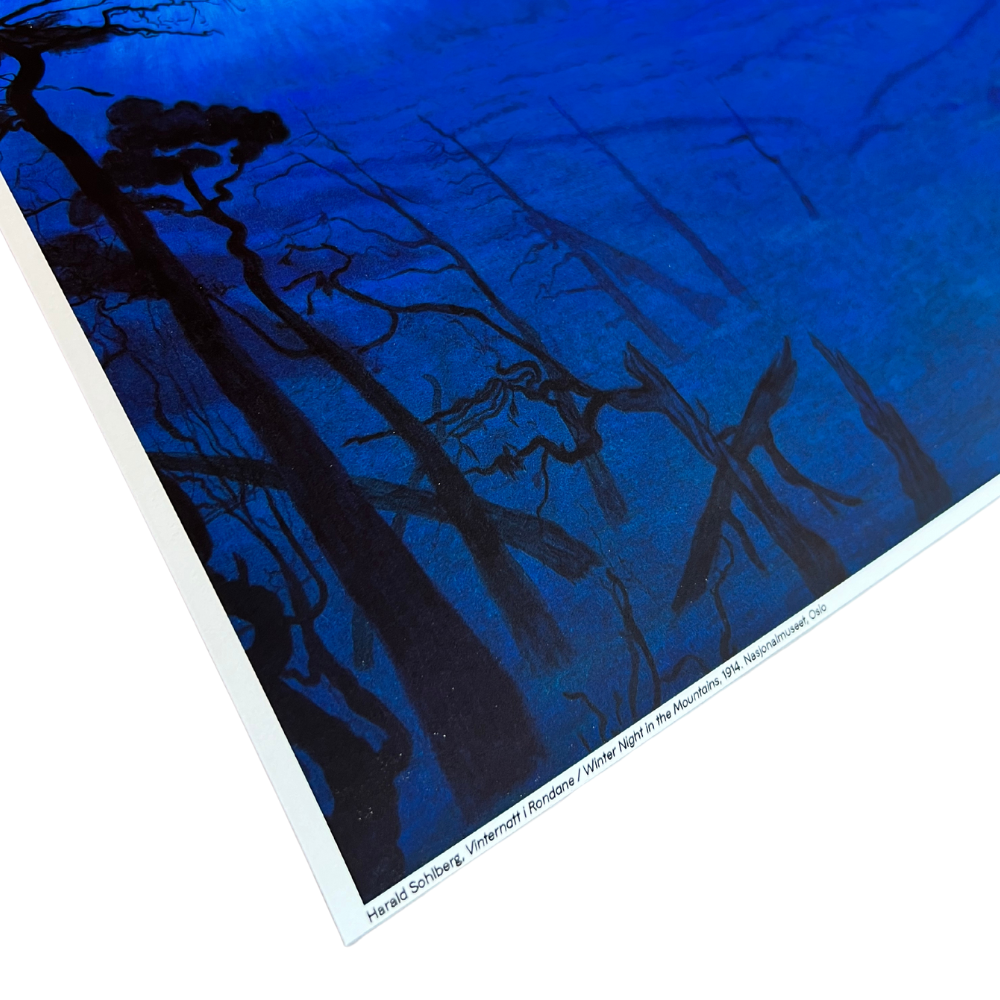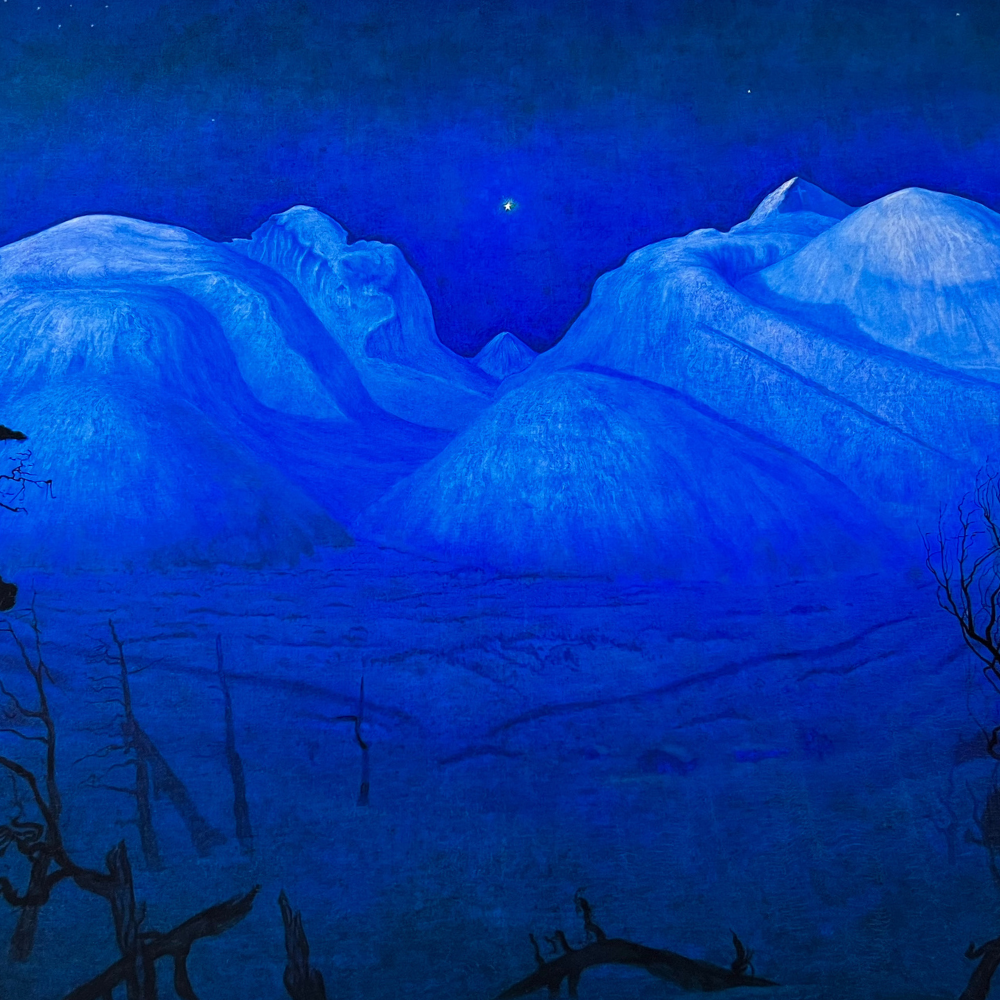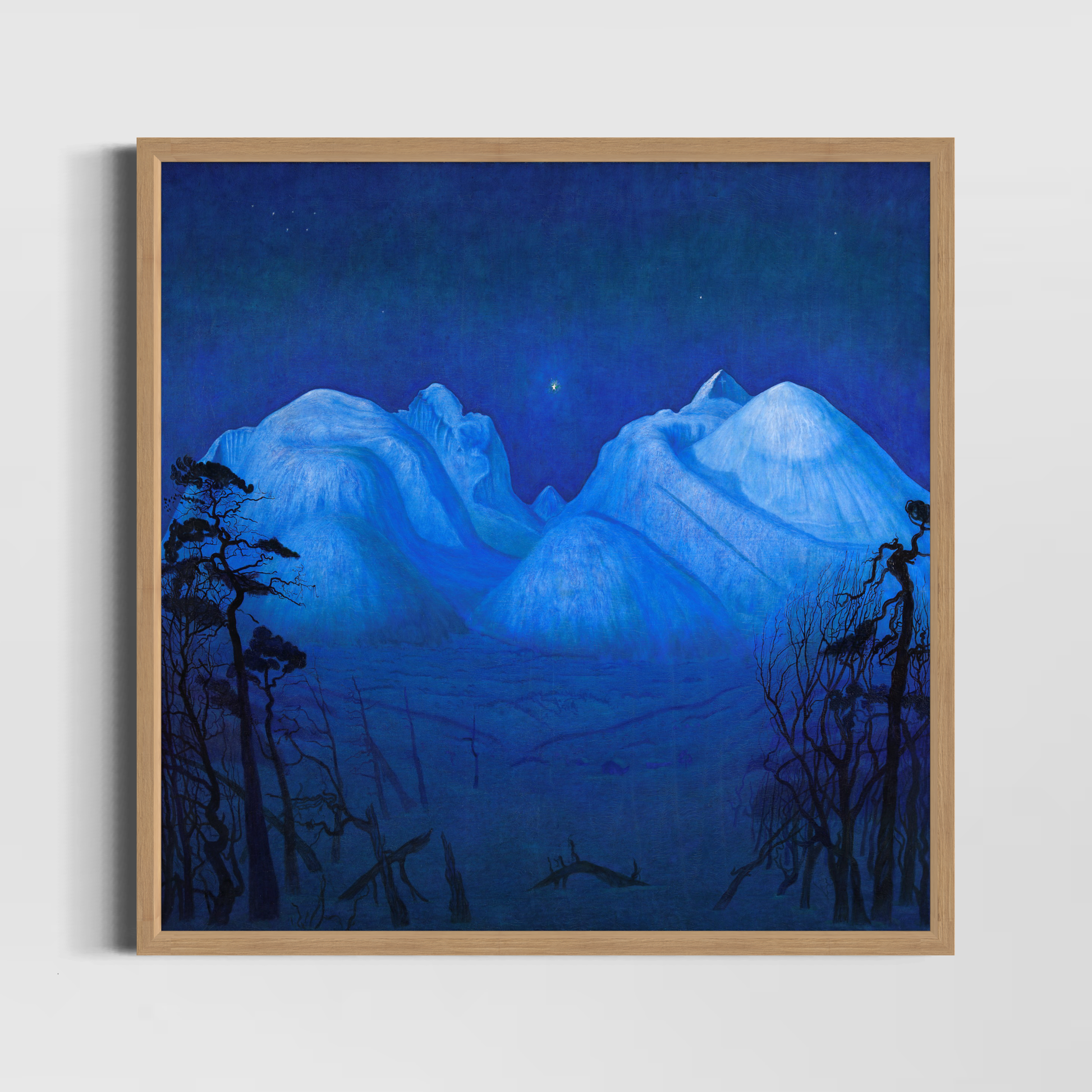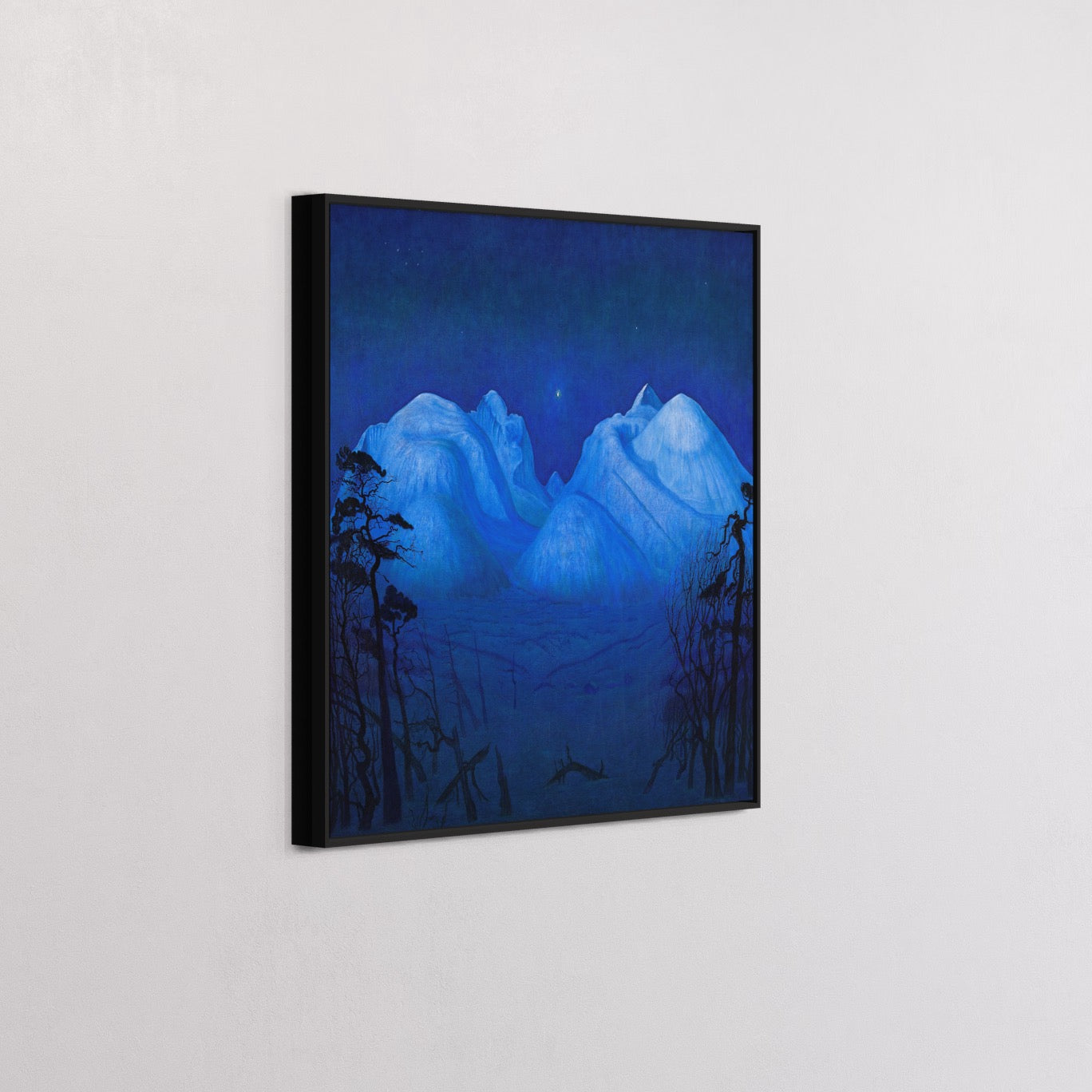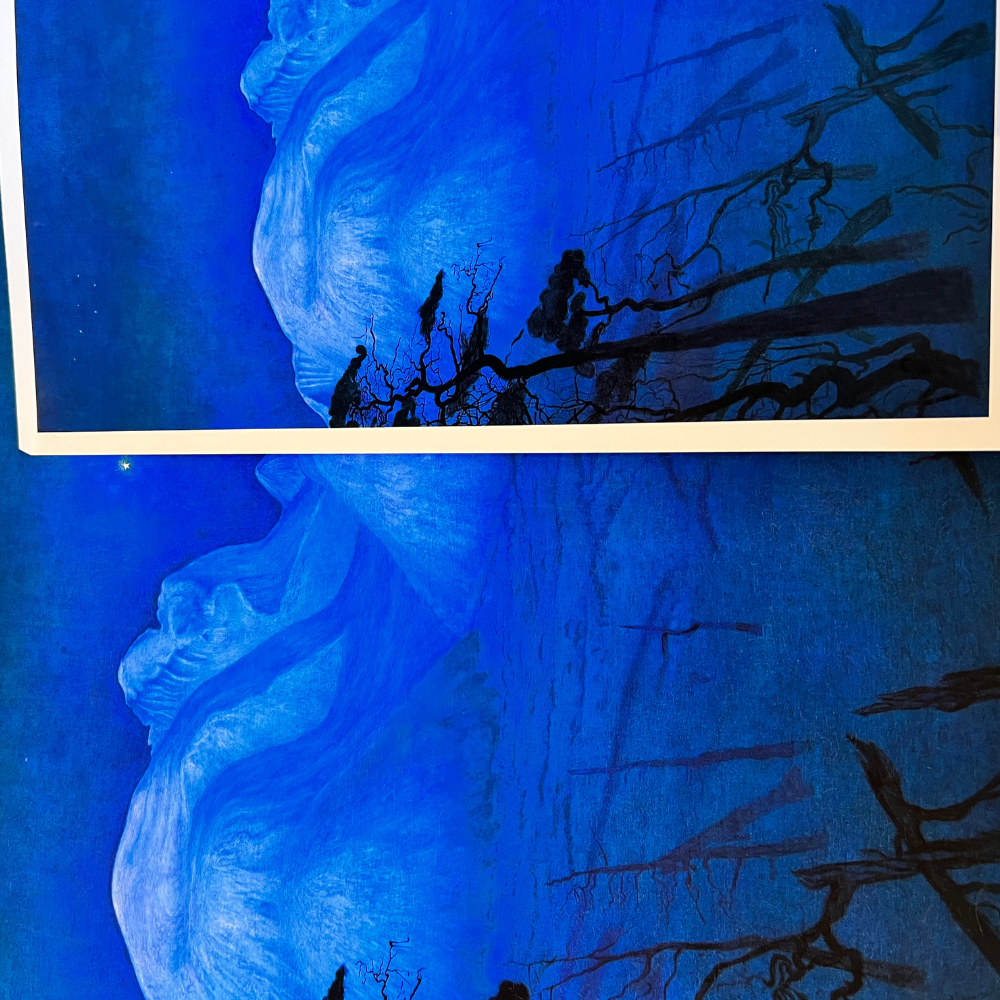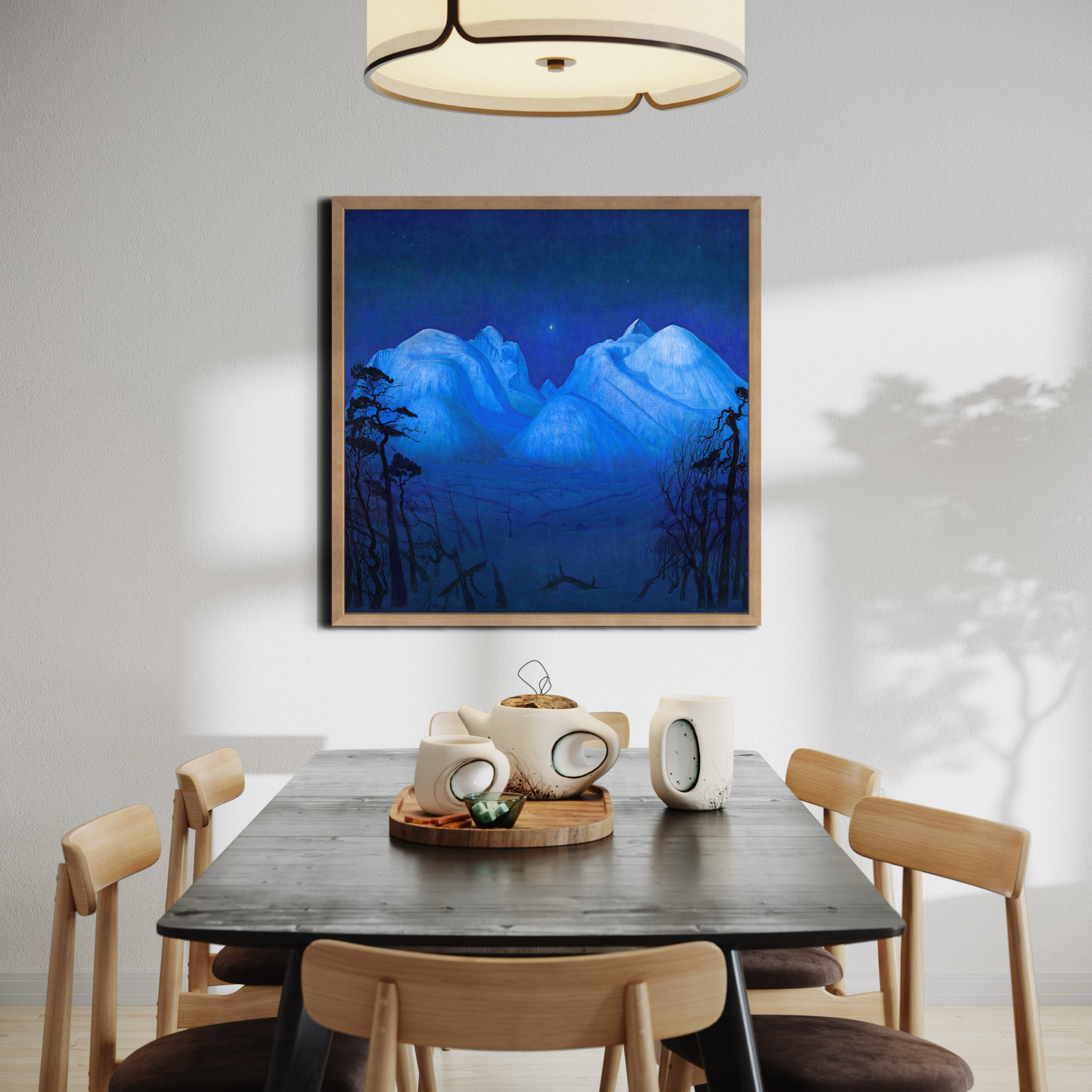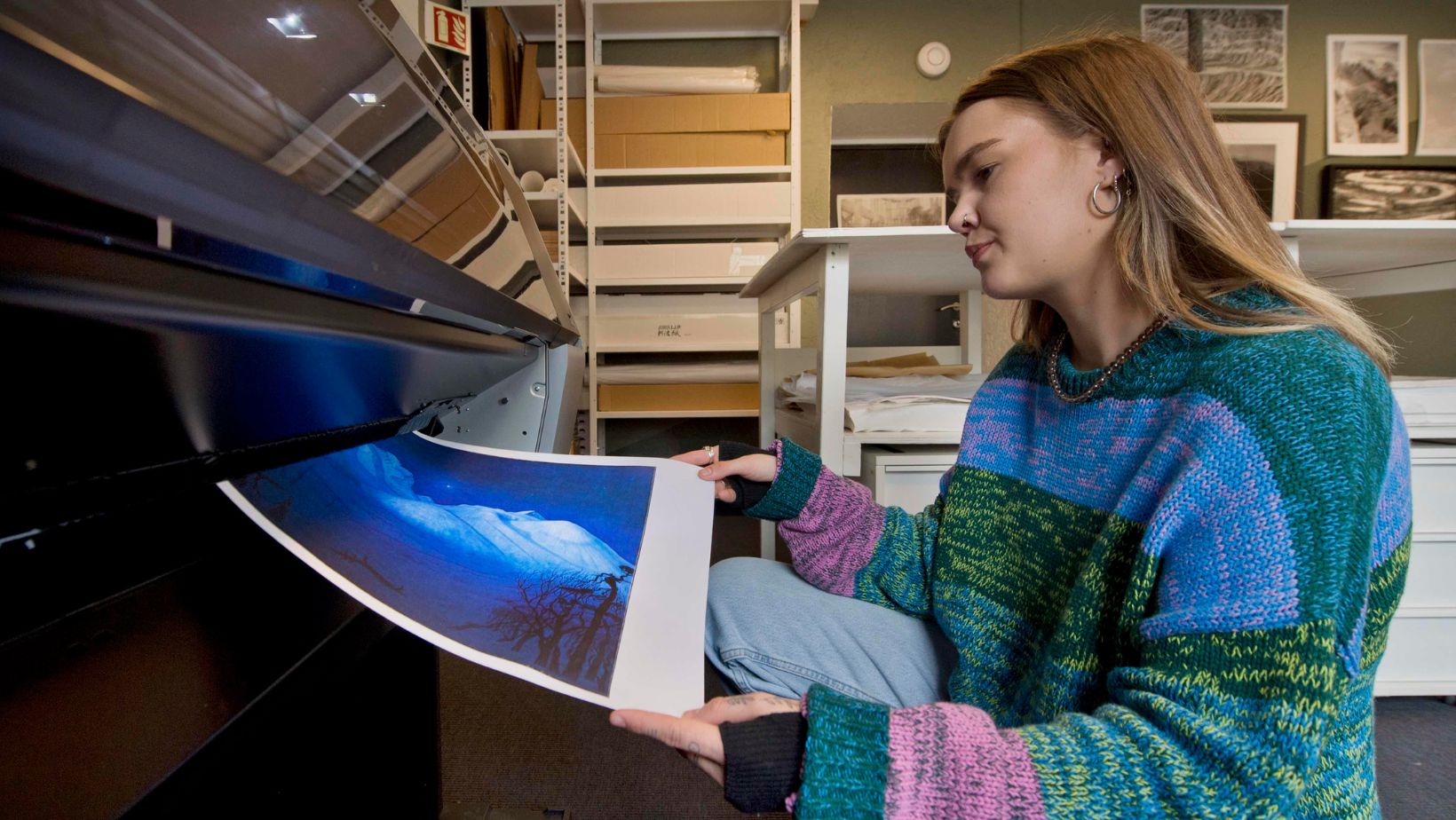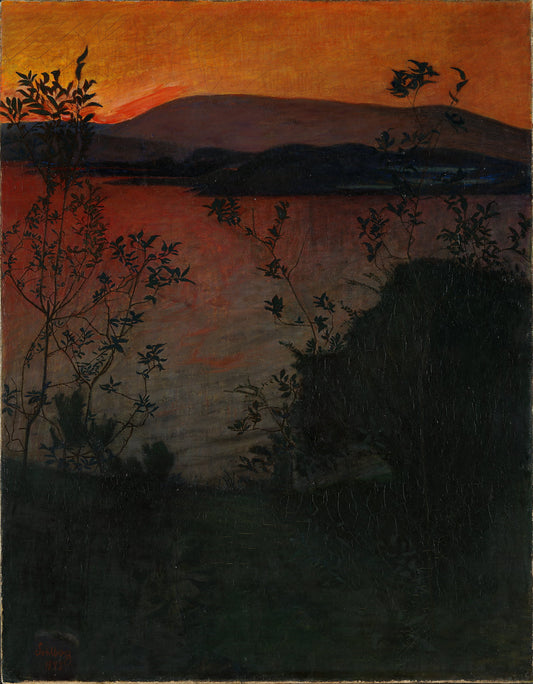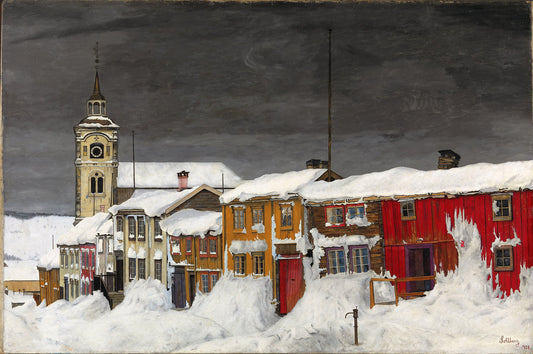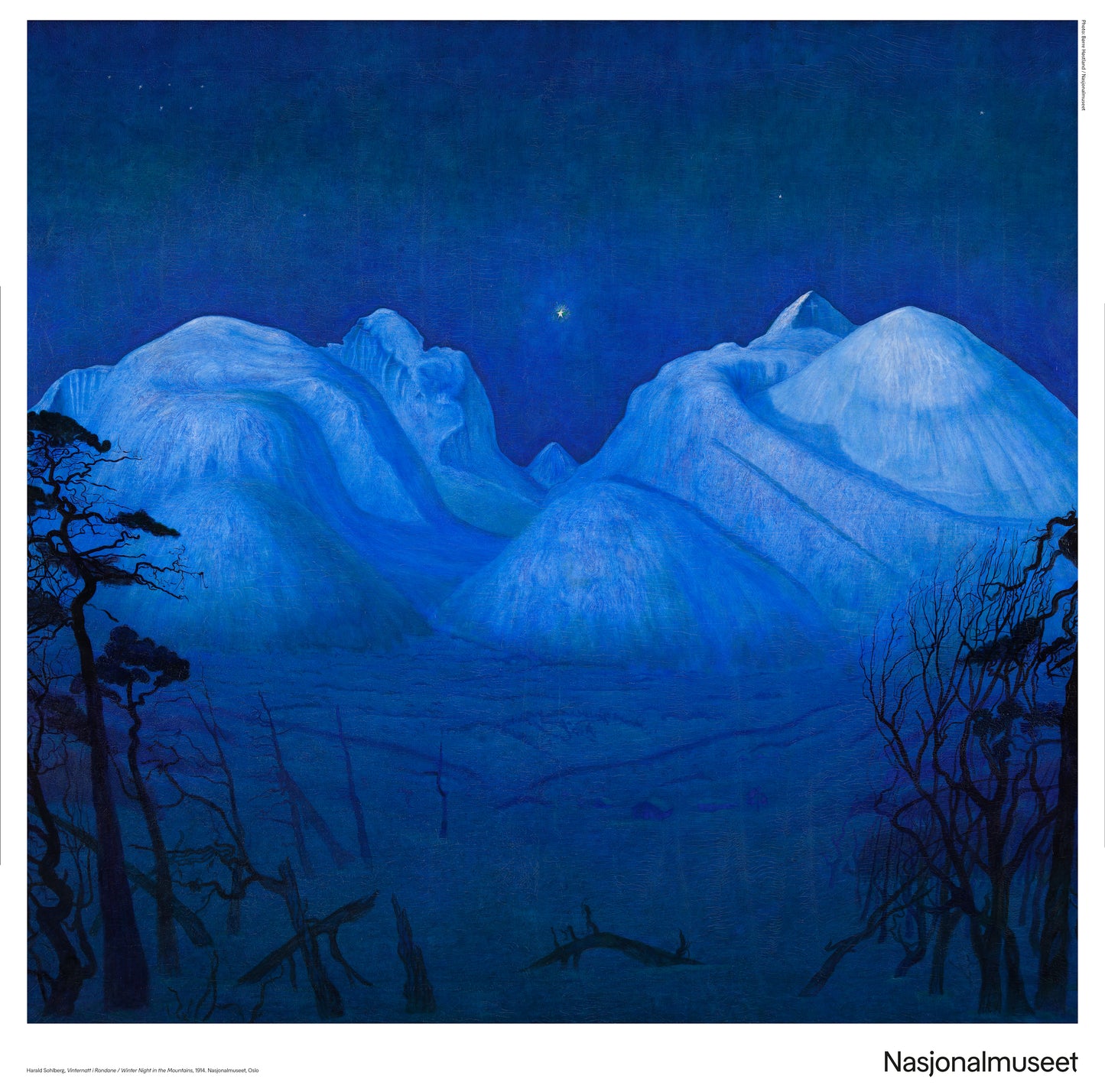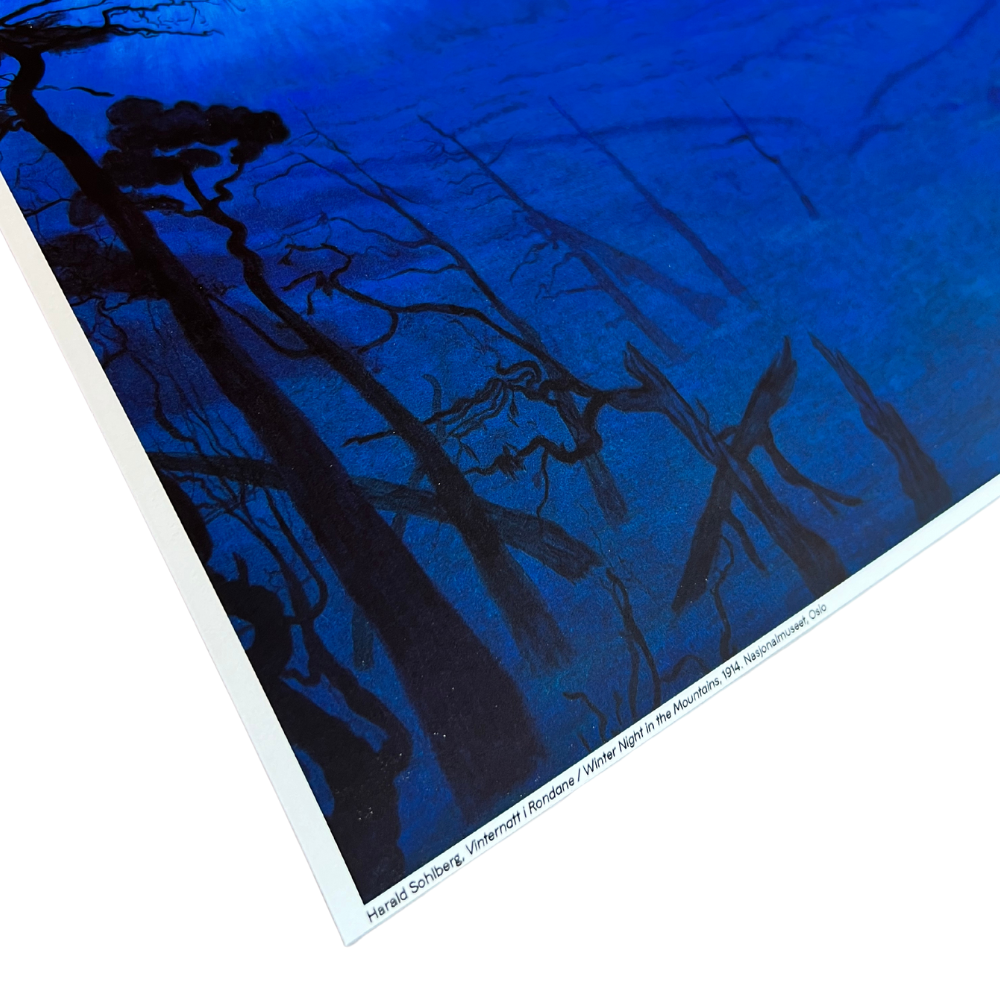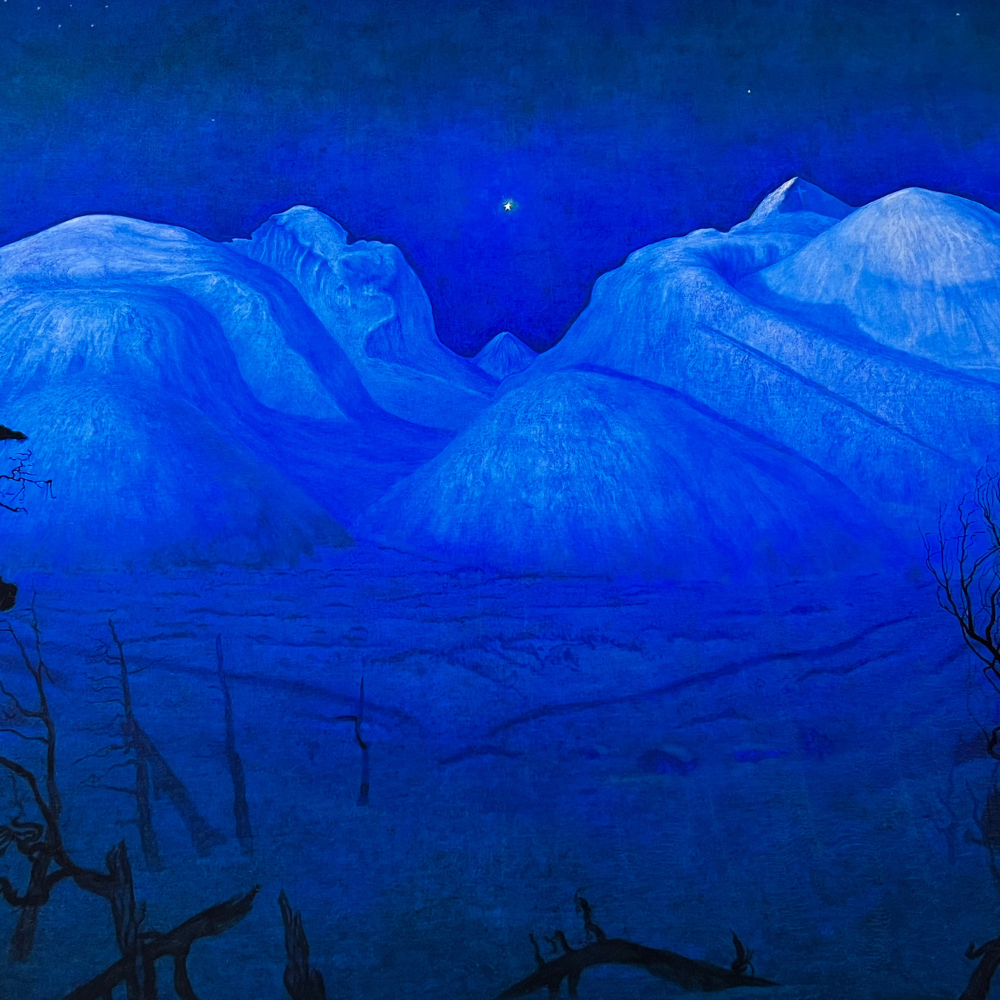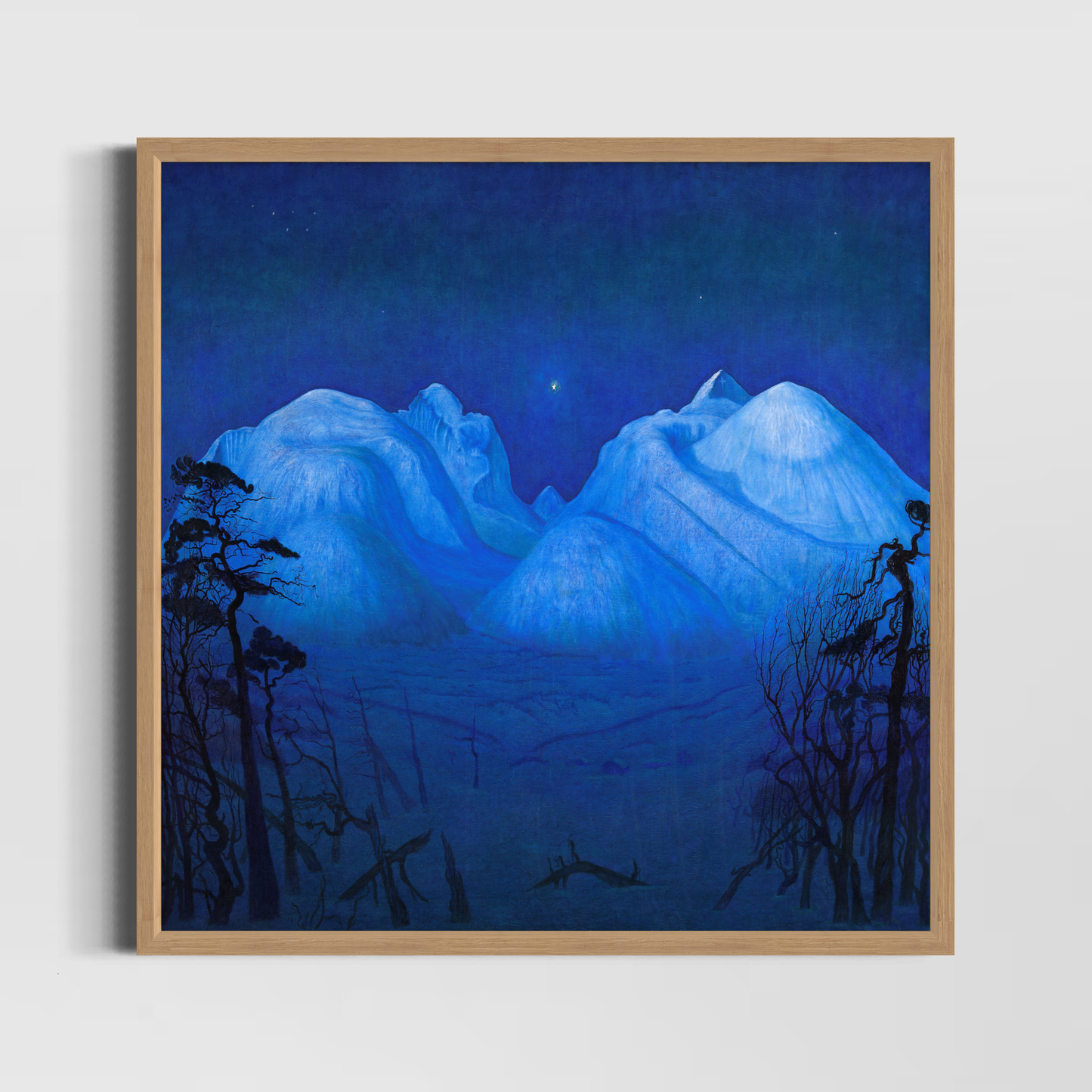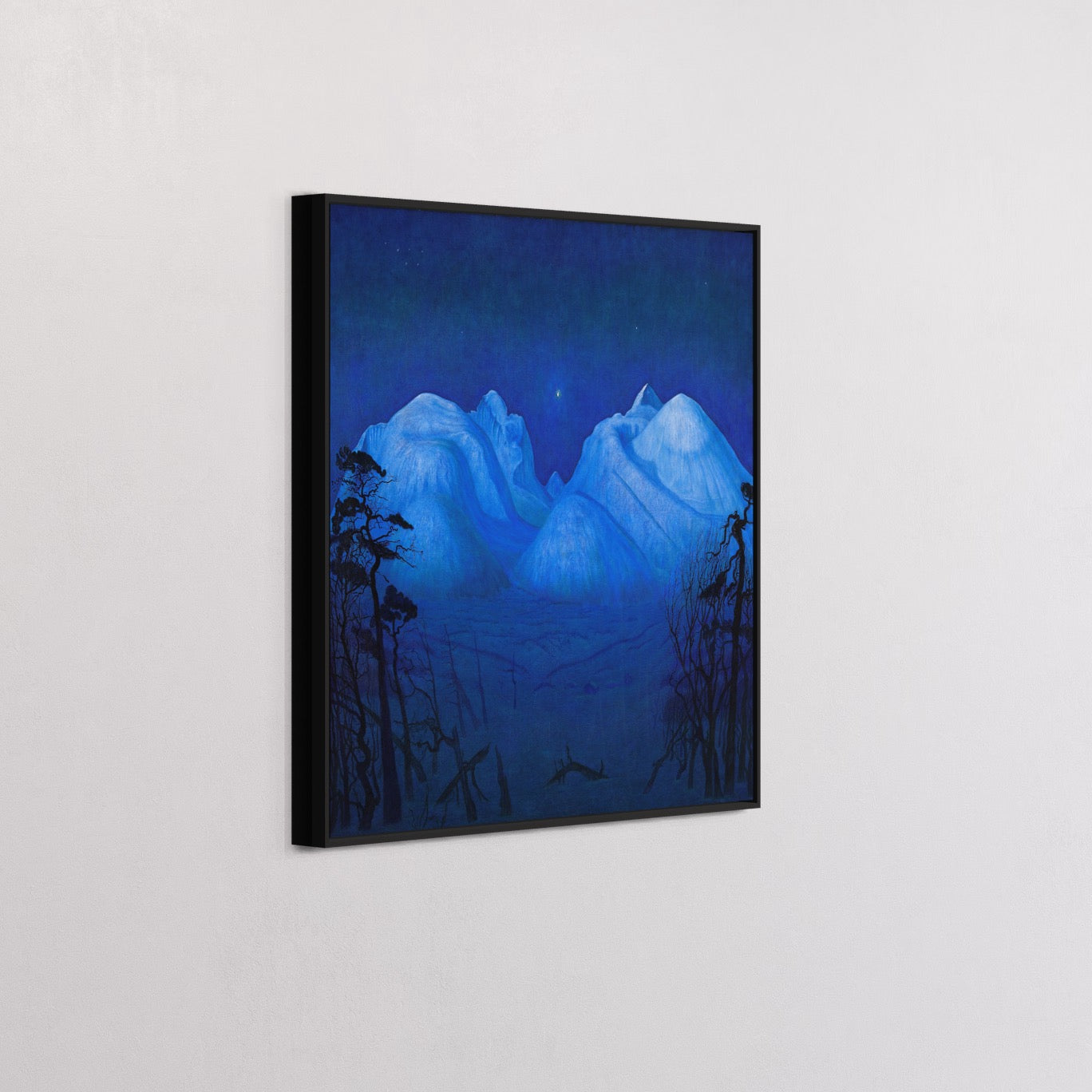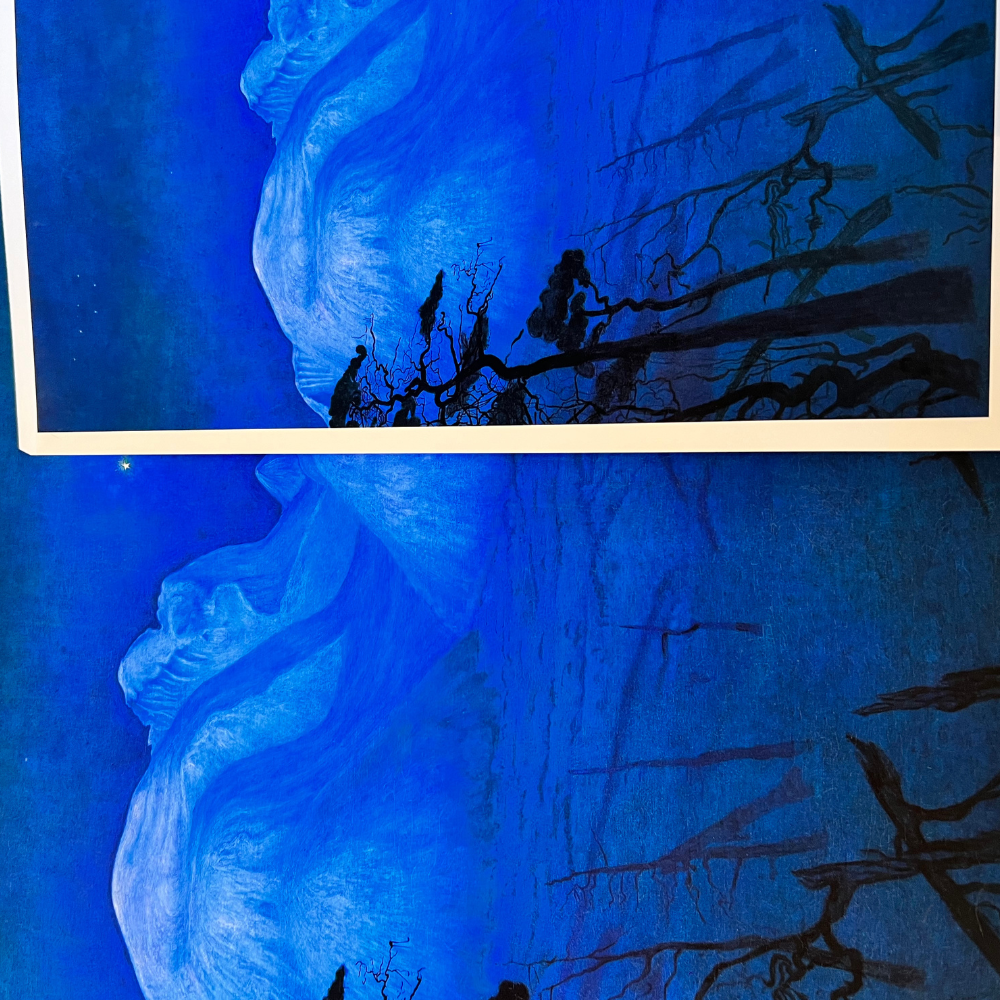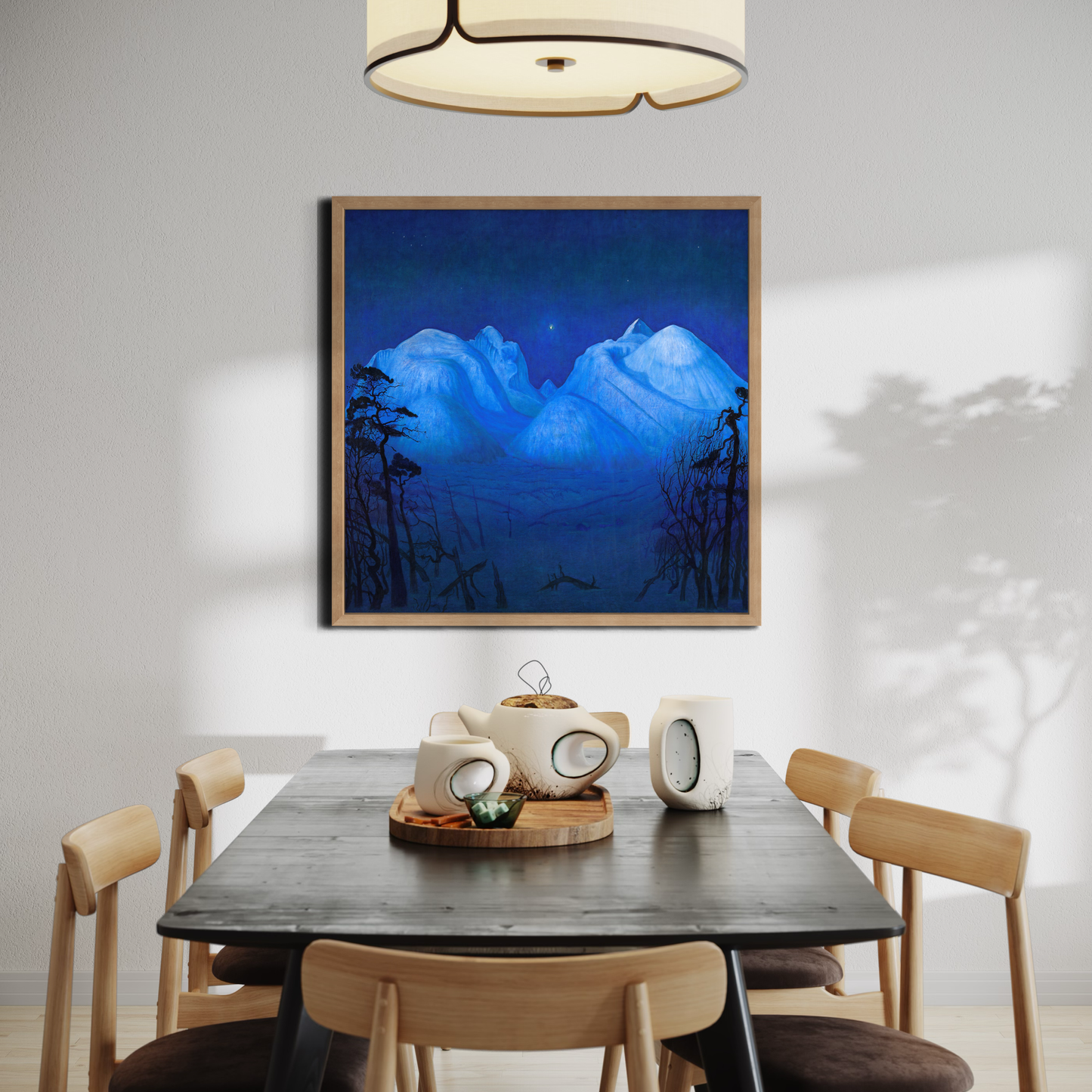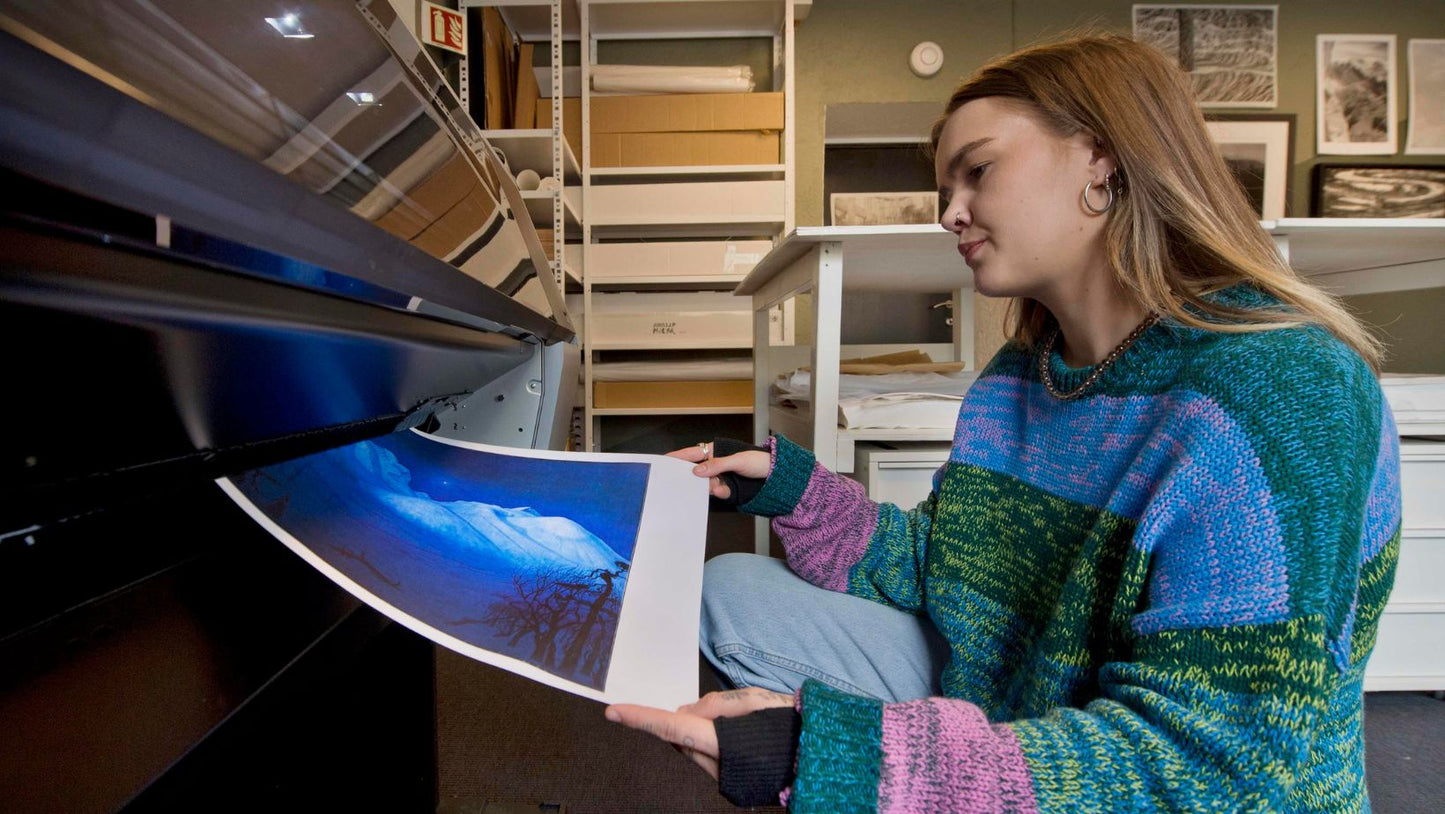Harald Sohlberg
Winter night in Rondane
Winter night in Rondane
Couldn't load pickup availability
High-quality reproductions from the National Museum's collection. Posters by DAIDDA are printed on Litho White Matt - 230 gram photo paper in premium quality. Artprints by DAIDDA are printed on Moab Entrada Natural 300 gram cotton art paper in premium quality. Produced by DAIDDA.
Harald Sohlberg drew the first sketch of "Winter night in Rondane" already on the train on the way home from a ski trip in 1899. But it was not until 1914 that the final result was completed.
This painting was to become Sohlberg's most significant motif. After the first trip, he returned to Rondane several times to be near the subject. He also took photographs which he used as study material. During fifteen years, Sohlberg worked with the mountains in Rondane, and the result was several paintings, a number of drawings and a popular graphic magazine.
In most of Sohlberg's depictions of Rondane, the mountains lie there like a snow-covered castle with no trace of human activity. Some exceptions include versions with a cabin and some skiers. In the final and largest version, the snow-clad mountains reign in a night landscape. The stars shine in the dark sky, and in the foreground are winter trees and bushes in dark silhouette. They act as a kind of stage curtain that opens in the middle and invites us into this cold winter landscape. Sohlberg was concerned that the foreground should not be too dense and crowded; "It must not appear desolate and vast. Because that is where the night and the anxiety in the picture should lie." (1)
The painting "Winter night in Rondane" is Harald Sohlberg's most central work and can also be considered the highlight among symbolist landscapes in Norway, even though it was executed relatively late in relation to the heyday of symbolism. It was first shown at the Jubilee exhibition for the constitution in 1914. The following year it was bought by JB Stang, who in 1918 gave it to the National Gallery.
In 1995, the painting was voted "Norway's national painting" by NRK's listeners. Sohlbergplassen, a lookout point by Lake Atnsjøen, was completed in 2005 as part of the "National Tourist Routes".
Date: 1914
Other titles: Notte d'inverno sulle montagne (ITA)
Winternacht in Rondane (TYS)
Winter Night in the Mountains (ENG)
Designation: Painting
Material and technique: oil on canvas
Technique: Oil
Material: Canvas
Dimensions: H 160.4 cm x W 180 cm x D 3.5 cm
Subject: Visual arts
Classification: 532 - Visual arts
Motif: Mountains, Winter
Type of motif: Landscape
Motif - place: Rondane, Dovre
Acquisition: Gift from Jørgen Breder Stang 1918
Inventory no.: NG.M.01185
Part of exhibition: Art 3. Works from the collection 1814-1950, 2007 - 2011
The dance of life. The collection from antiquity to 1950, 2011 - 2019
The magical north. Finnish and Norwegian art around 1900, 2015
Registration level: Single object
Owner and collection: The National Museum of Art, Architecture and Design, Visual Art Collections
Photo: Høstland, Børre/Børre Høstland
Levering
Levering
Henting: Du kan hente pakken din hos oss innen kort tid. Du får en hentemelding når den er klar.
Postforsendelse: Levering med Posten tar normalt 2–5 dager i Norge og opptil 14 dager til Europa og globalt.
Emballasje: Alle produkter lages på bestilling og sendes rullet i miljøvennlig emballasje.
See all works
-
Winter night in Rondane
Vendor:Harald SohlbergRegular price From 150,00 NOKRegular priceUnit price per -
Summer night
Vendor:Harald SohlbergRegular price From 150,00 NOKRegular priceUnit price per -
Night glow
Vendor:Harald SohlbergRegular price From 150,00 NOKRegular priceUnit price per -
Street in Røros
Vendor:Harald SohlbergRegular price From 150,00 NOKRegular priceUnit price per
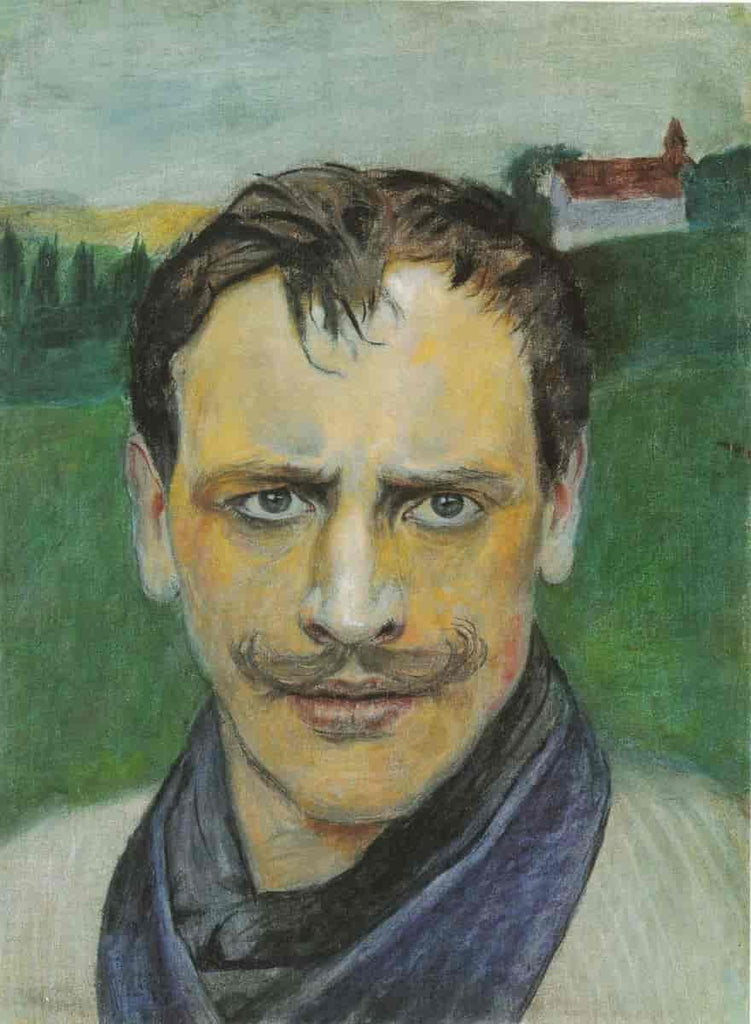
Harald Sohlberg
Harald Sohlberg was a Norwegian painter who was central to the breakthrough of neo-romanticism in Norway. He was born in Oslo and had a very distinctive style where he placed great emphasis on drawing and details, while at the same time the pictures were not pure imitations of nature. Sohlberg sought to express his experiences of nature and adapted drawing and colors so that the pictures could convey these experiences. The symmetrical composition he used in many of the pictures helps to bring in a supernatural, almost religious atmosphere.
Education
Sohlberg began his artistic education at the Royal School of Arts and Crafts in 1885, where he was a student up to and including the autumn of 1890. He also had a stay in Slagen by Åsgårdsstrand in 1890, where he was a student of Sven Jørgensen. He then studied under Kristian Zahrtmann in Copenhagen in 1891–1892 and drew for four months at Eilif Peterssen's and Harriet Backer's painting school in 1894.
Known for mood pictures
Sohlberg traveled to Valdres to paint in the summer of 1889, and there he painted a study called Summer evening, a picture with broad brushstrokes and violet tones that emphasize the evening atmosphere. The picture links to the summer night pictures that Kitty Kielland and Eilif Peterssen had painted by Dælivannet in 1886, and shows the interest in conveying the mood of nature which was to become Sohlberg's main interest in the following years.
In 1894, Sohlberg made his debut at the Statens Kunstutstilling (Autumn Exhibition) with the picture Nattegloð (1893), which was to be his artistic breakthrough and was purchased for the National Gallery. The picture has many of the distinctive features and qualities that were to become a hallmark of Sohlberg's art. In 1899, Sohlberg painted Sommernatt, a picture from Nordstrand with a view over the Oslofjord. Sohlberg has sought here to capture the special atmosphere of the Norwegian summer night, and he stylizes the landscape in clean surfaces and clear lines.
Sohlberg is particularly known for atmospheric images such as Summer Night, the cemetery image Night, Flower meadow north, and not least Winter Night in Rondane. He had a significant influence on Norwegian art in the first half of the 20th century, and his style and motifs have inspired many later Norwegian artists.

